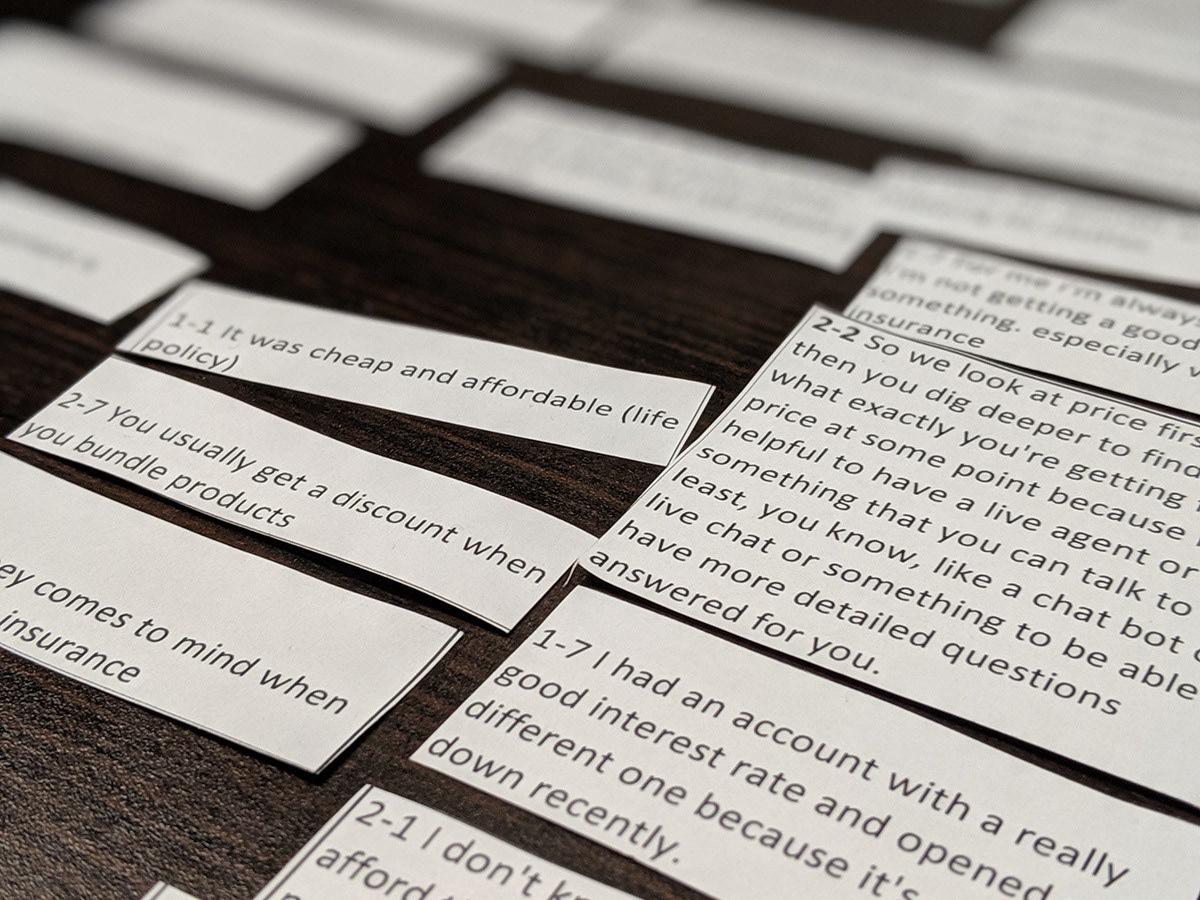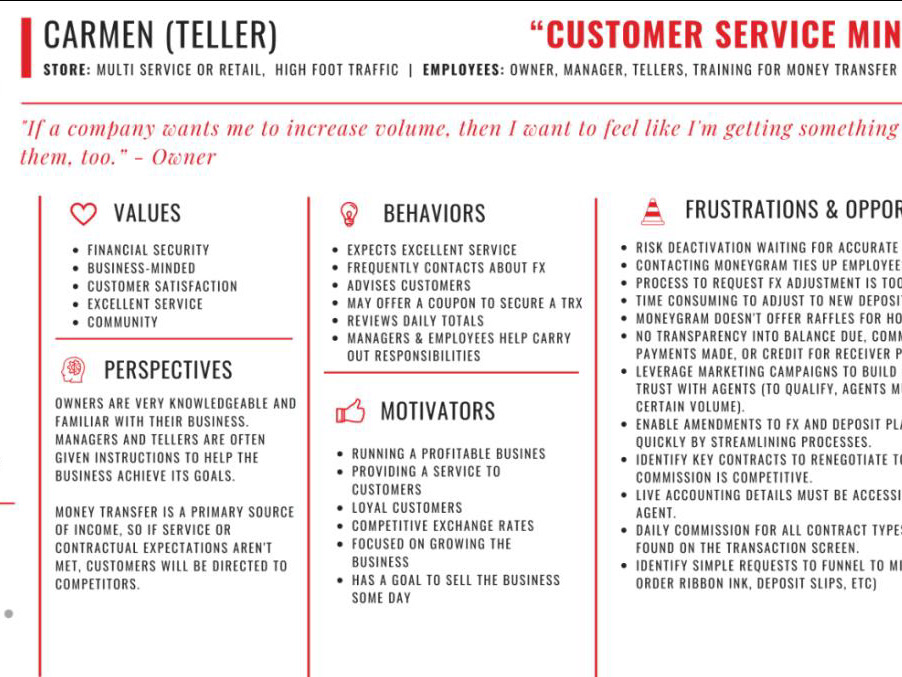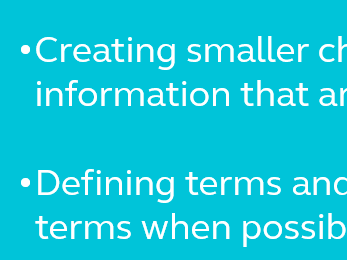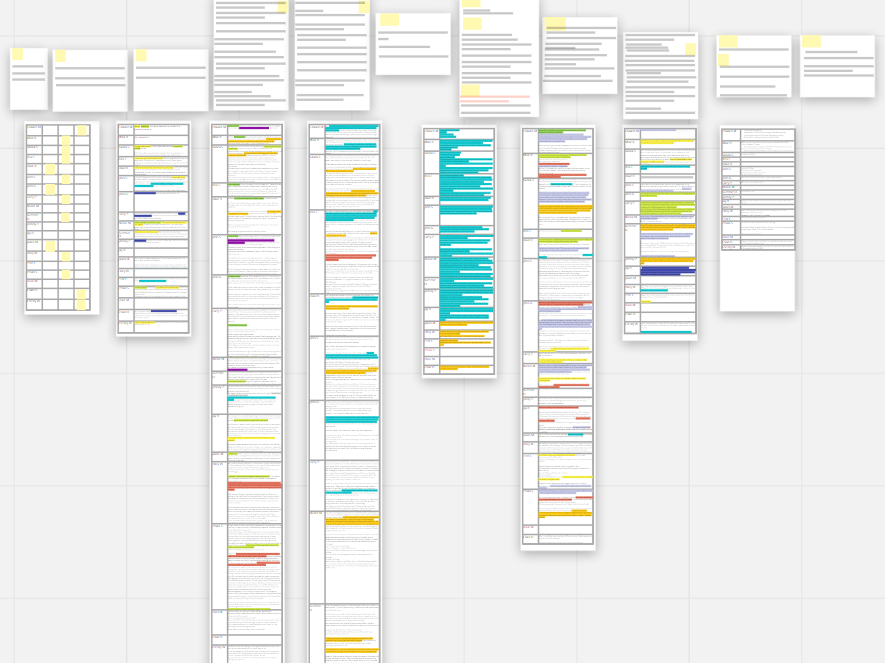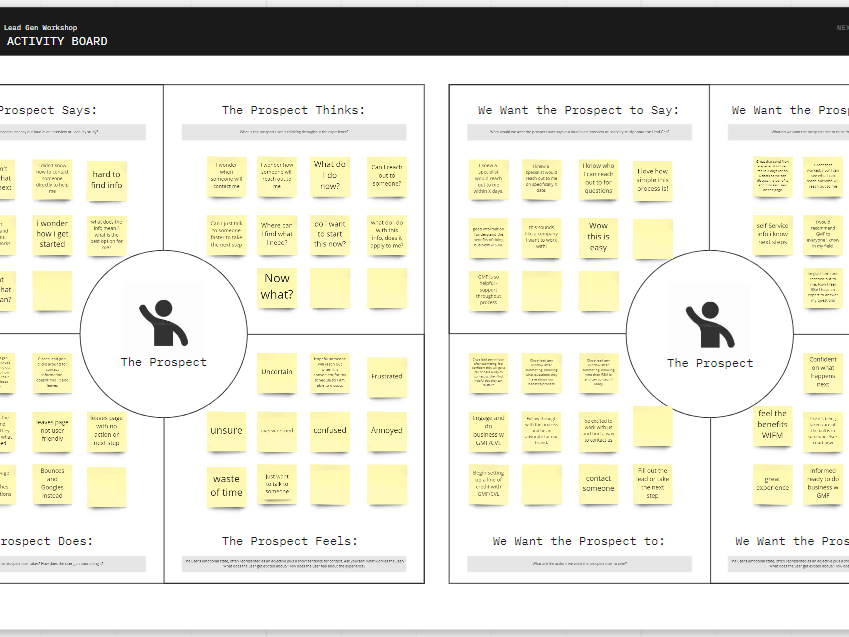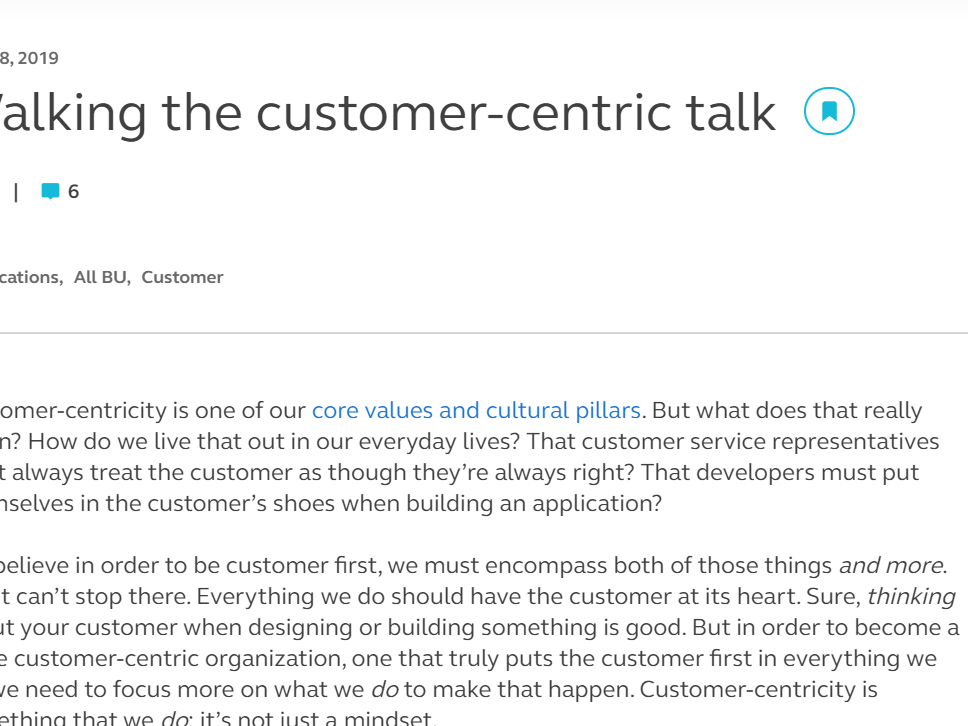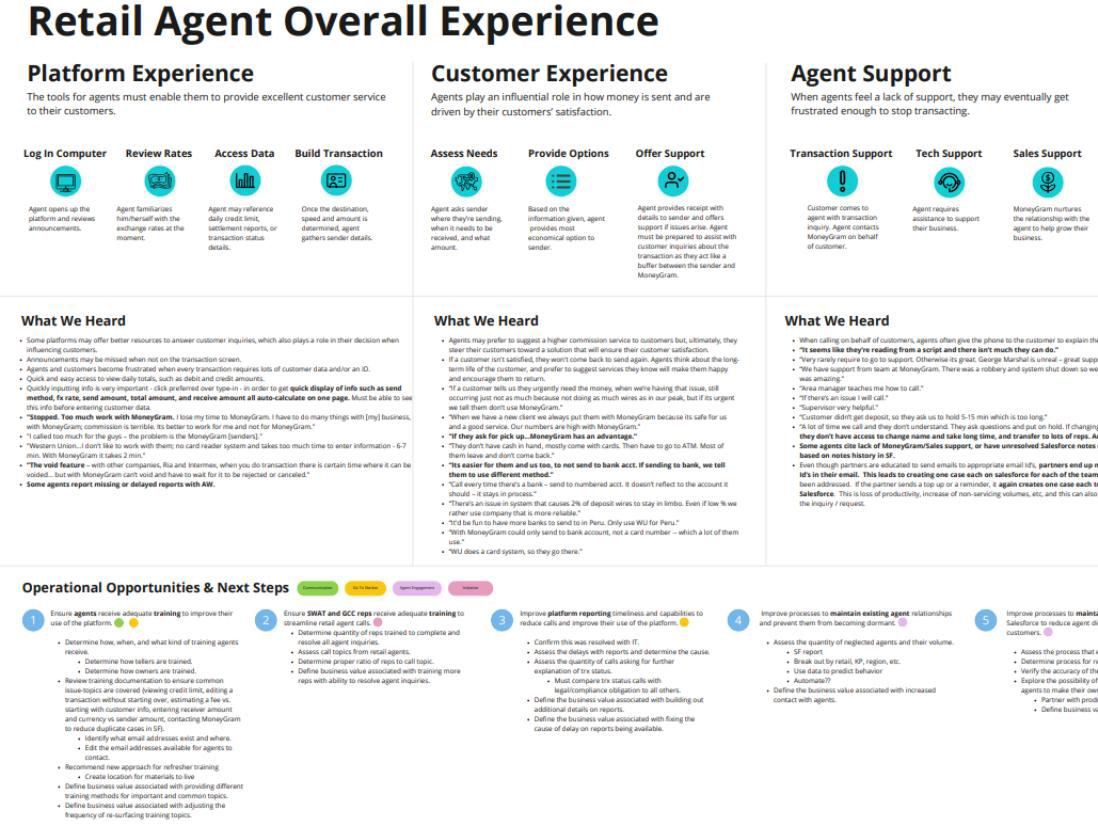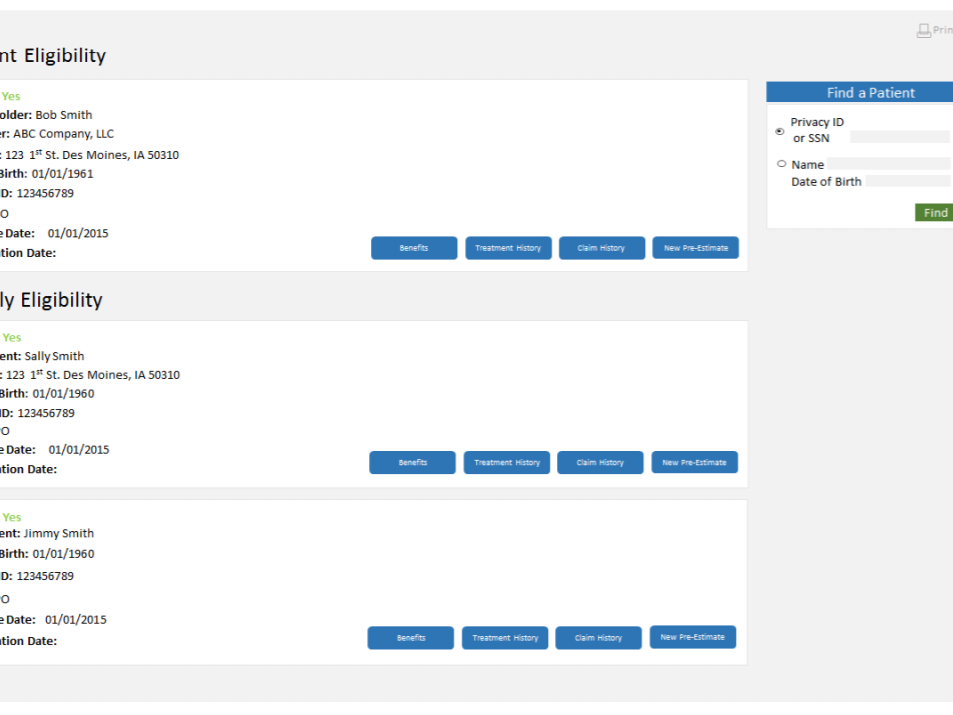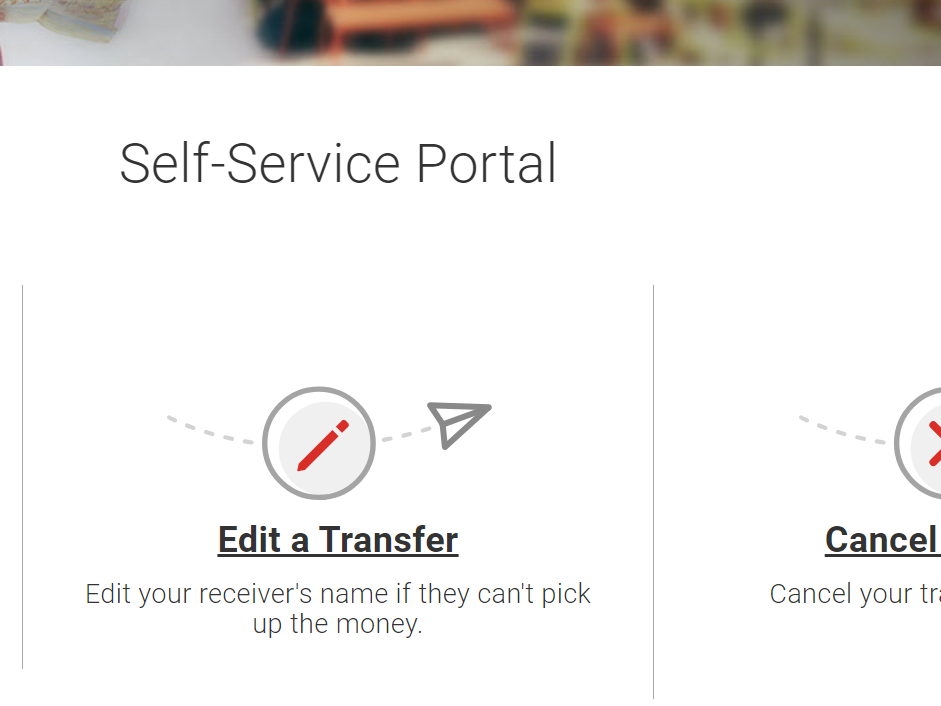Challenge
How can we re-frame disability insurance to make it resonate with more people?
My Role
I was the lead researcher on this project, which meant I was responsible for research design, facilitation, and synthesis. The design concepts came from the other UX designer on the project; we partnered together so that we could split the research and design and remove any bias that would come from having the same person facilitate interviews that also designed the concepts.
Process
Interviews
Since the research objective was to find a way to frame disability insurance so that more people were interested in the product, we tested some unique and unfamiliar concepts with people. It felt important to use in-person interviews to better see body language and facial expression as people reacted to the new concepts.
I interviewed 21 participants in Austin, TX and Washington DC.
To introduce the new concepts to people, I used a cart sort exercise where I asked each participant to place topics into one of three categories: like it, don't care/unsure, don't like it. Through the exercise, we were able to learn what concepts people resonated with and valued versus those they didn't.
We also had a rough design for a online product experience that incorporated some of the concepts we previously introduced to them. Beyond understanding the words and phrases that resonated with people, we also wanted to learn what components people wanted to customize and to what extent.
The research revealed some strong themes around:
•Distrust among insurance/financial companies.
•The mindset of target audience.
•Their understanding of the product.
“What’s the catch? This sounds too good to be true.” - Mari, 31
“I’m put off by it…I don’t envision myself needing it.” - Brandon, 31
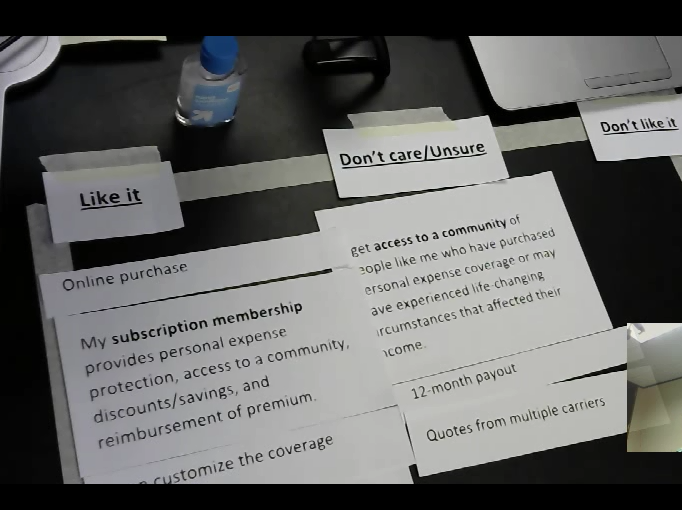
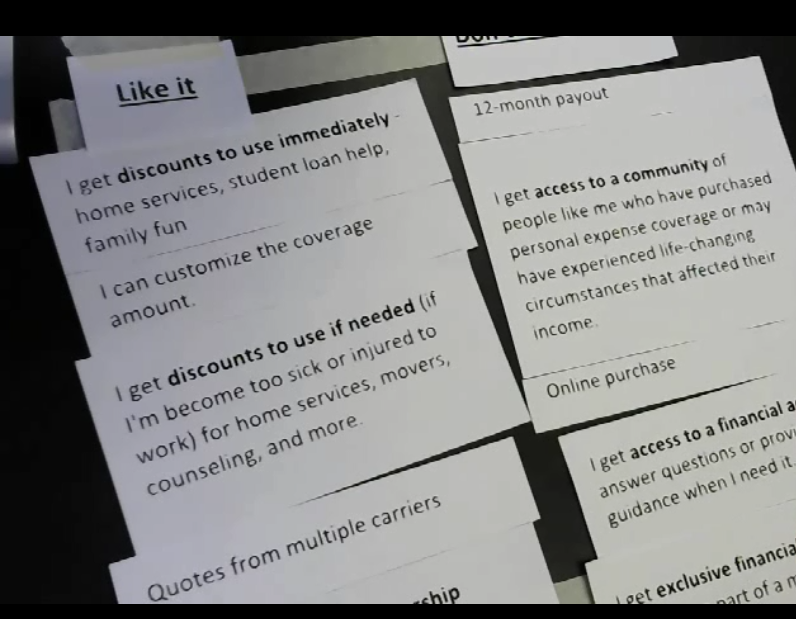
How might we...
Armed with so much good knowledge, the next step was to brainstorm ways to help our target audience overcome some of the barriers that we were still continuing to see.
I pulled the entire project team together to run a "how might we" workshop, where we brainstormed potential solutions and then placed votes on the ideas, keeping in mind the following criteria:
•The idea must actionable.
•The idea must be feasible.
Once we had some good, actionable ideas, the team proceeded with prototyping and running a test.
